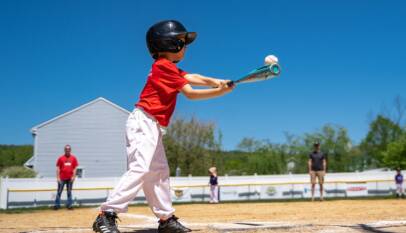
Maple wood bats have become a popular choice among baseball players for their durability and strength. They offer a harder surface compared to ash bats, which can lead to a more consistent and powerful hit. This makes them favored by many athletes at various levels of the game.
The density of maple wood also contributes to less flex during a swing, allowing for better control and precision. However, maple bats can be heavier and more prone to cracking under certain conditions, which is important to consider.
Understanding the benefits and drawbacks of maple wood bats helps players choose the right equipment for their style and needs. This article will explore what makes maple bats distinct and why they might be the best option for some players.
Benefits and Characteristics of Maple Wood Bats
Maple wood bats are favored for specific physical properties and impact on player performance. Their hardness, weight distribution, and comparison to other wood types influence their popularity among athletes at various levels.
Durability and Hardness
Maple is a dense hardwood known for its high durability. Its tight grain structure reduces the incidence of bat breakage compared to other woods. This hardness helps the bat withstand repeated impacts over time.
However, the same hardness can make maple bats more prone to surface cracking instead of splintering. This means while they might not shatter, cracks can develop, requiring bat replacement. Players appreciate this trade-off because of the bat’s extended lifespan under regular use.
The strength of maple wood allows manufacturers to create thinner-walled bats without sacrificing durability, potentially increasing the size of the sweet spot on contact.
Performance Comparison with Other Woods
Compared to ash, maple bats offer a harder hitting surface. This hardness translates into less energy absorbed by the bat, potentially resulting in higher ball exit speeds. Players often report a more consistent feel with maple.
Ash bats, in contrast, are more flexible and lighter, which some players prefer for swing speed and control. Maple’s rigidity provides a different feedback in the hands, often described as a solid “crack” sound at impact.
Bamboo and birch are less common alternatives. Birch shares some flexibility traits with ash but is generally harder. Bamboo is lighter and harder but less durable than maple, influencing player choice based on specific performance and durability needs.
Weight and Balance Considerations
Maple bats typically weigh slightly more than ash bats due to their density. This extra weight can add power but may reduce swing speed for some players.
Manufacturers design maple bats with balanced or end-loaded weight distributions to meet different hitter preferences. Balanced bats provide easier control and quicker swings, while end-loaded bats offer more power potential but require more strength to swing effectively.
Players often test several models to find the right combination of weight and balance in a maple bat based on their hitting style and strength. The preference for weight and balance affects bat speed, control, and overall hitting comfort.
Choosing and Caring for Maple Wood Bats
Choosing the right size maple wood bat is critical for performance and comfort. Proper maintenance extends the bat’s life and preserves its hitting qualities. Custom options allow players to tailor bats to their preferences, balancing weight, length, and design.
Selecting the Right Bat Size
Bat size depends primarily on the player’s height, weight, and hitting style. A common guideline is that players under 5’5” should use bats between 30 to 32 inches, while players over 6’0” often prefer 33 to 34 inches.
Weight is equally important. Most players benefit from a bat weighing about 17-20 ounces. Heavier bats generate more power but reduce swing speed; lighter bats increase control but may lower power.
Testing different sizes before making a purchase is advisable. Players should ensure the bat feels balanced and comfortable during a full swing. Measuring bat drop (length in inches minus weight in ounces) helps find an optimal balance, typically between -3 and -10 for maple bats.
Proper Maintenance and Storage
Maple wood bats require specific care to maintain structural integrity. After use, wiping the bat with a dry cloth removes dirt and moisture. Avoid harsh cleaners or soaking the bat in water as this can weaken the wood.
Store bats in a cool, dry environment away from direct sunlight and extreme temperatures. Extreme heat or cold affects the wood’s density and increases breakage risk.
Rotating the bat during hits helps reduce stress on one side, minimizing cracks. Players should also avoid using maple bats in cold weather, as cold temperatures make the wood more brittle.
Inspect bats regularly for hairline cracks or dents. Even small damage can lead to sudden breakage. Replacing bats at the first signs of splitting is recommended for safety.
Custom Maple Bat Options
Custom maple bats offer personalized length, weight, and knob design to match player needs. Some manufacturers provide options for handle taper, barrel diameter, and finished coatings.
Customizing the bat’s grip with different tape types or ergonomic handles can enhance comfort and control. Players often choose finishes such as natural, glossy, or matte to improve appearance and protect the wood.
Personal engravings or logos can be added for identification or style. Custom bats tend to cost more but provide a tailored feel and performance advantage.
Advanced players benefit from selecting maple with specific grain density, which affects durability and ball response. Manufacturers may grade wood quality to ensure consistent performance in custom orders.
Kongo Tech Leading Innovation in African Technology Solutions
Kongo Tech specializes in developing innovative digital solutions tailored to African mark…





